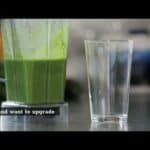You’ve probably come across the terms “masticating,” “centrifugal,” and “cold-press” while investigating different types of juicers.
We’ll go over the benefits and drawbacks of these juicers in this article. By the end, you’ll know which one is the best fit for you. You might want to start juicing at home, establish a juice business, or upgrade your equipment, but you’re not aware what the differences between masticating, centrifugal, and cold press juicers are.
Whatever your goal is, knowing which juicers are the best on the market is important to your juicing success. Continue reading to find out which juicer is best for you!
Types of Juicers: Masticating and Centrifugal
Masticating and centrifugal juicers have been the most frequent types of juicers used in households over the years due to their relatively low price points and accessibility.
Both of these juicers press product against a sharp screen to obtain juice. The centrifugal force is used in a centrifugal juicer (by spinning very fast). A slow-turning screw forces the product against the screen in masticating juicers.
Types of Juicers: Juice Press
The juice press is a far better alternative that is becoming more and more accessible to juice businesses and consumers. These juicers use a two-step grinding and pressing method to generate cold-pressed juice. This approach yields the best-tasting, nutrient-dense juice.
Even though the term “cold-pressed juice” is often used to describe different types of juice, it can only be produced by a juice press.
Centrifugal Force Juicer
One of the most popular juicers on the market is the centrifugal force juicer, commonly known as the “rapid juicer.” This machine is commonly used in households since it delivers quick juice and is inexpensive to purchase.
So, how does it function? Fruits and vegetables are fed through a feeding tube and forced against a fast spinning metal blade, which cuts and spins them against a sharp screen at a high speed of 6,000-14,000 RPM.
This juicer is ideal for people who are new to juicing at home, don’t require huge amounts of fresh juice, aren’t concerned with extracting all of the juice from the produce, and want to enjoy their juice right away. This is usually the most affordable alternative on the market, and it gives consumers with all of the benefits of juice without the added cost of higher-quality techniques.
Masticating Juicer
Slow juicers, gear juicers, and auger juicers are all names for juicers that smash produce slowly. The produce is smashed at roughly 80-100 RPM in this juicer before being passed through a fine screen.
It produces a more nutritious juice because the juicing process is slower and does not introduce as much heat and oxygen as a centrifugal juicer. Masticating juicers often create a good amount of juice, which is good for both your wallet and the environment (you get more juice out of the food you buy) (reduces waste).
These juicers are a step up over centrifugal juicers, but they aren’t the ideal option for individuals looking to generate high-quality juice. A slow juicer’s juice has a lot of “solids” and separates quickly, similar to a centrifugal juicer’s juice. It should be consumed as soon as possible after preparation.
Furthermore, the overall flavor and mouthfeel of juices prepared using a slow juicer are disappointing. Because the produce is crushed between two hard surfaces and then pushed through a small opening through a screen, much of the produce is broken down to the point that it becomes part of the juice, resulting in a thicker, pulpier juice than usual.
The flavor of the juice isn’t the same or as excellent as when I make the identical recipe in a cold press juicer because of the forcing through a screen action.
The cold press juicer is what you need if you want to make great-tasting, nutrient-dense, longer-lasting juice that you can sell or keep in your fridge for several days.
Juice Press
The greatest form of juicer on the market is a hydraulic (or occasionally pneumatic) cold press juicer. Because there are two phases in the juicing process, these are frequently referred to as two-stage juicers.
The fruit was chopped (also known as grinding) into a chunky salsa consistency. This is simply the process of chopping the product into small pieces, and it is not where the juice is extracted.
The juice is delicately removed by crushing the pulp under hundreds of pounds of pressure.
The term “cold-pressed juice” is commonly used in the juicing industry. The word “cold-pressed” comes from a conventional juice press. Because a juice press is the only form of juicer that includes a press, it is the only genuine cold-press juicer. With the least amount of separation, a true juice press produces the smoothest, best-tasting juice possible.
Juice presses can extract the most amount of nutrients from your fruits and veggies. It also has the longest shelf life (about 3-5 days, depending on the recipe ingredients) and requires the least amount of separation.
The juice is delicately removed by crushing the pulp under hundreds of pounds of pressure.
The term “cold-pressed juice” is commonly used in the juicing industry. The word “cold-pressed” comes from a conventional juice press. Because a juice press is the only form of juicer that includes a press, it is the only genuine cold-press juicer. With the least amount of separation, a true juice press produces the smoothest, best-tasting juice possible.
Juice presses can extract the most amount of nutrients from your fruits and veggies. It also has the longest shelf life (about 3-5 days, depending on the recipe ingredients) and requires the least amount of separation. Looking for the best cold press juicer, we have a list you can check.
Was this helpful?
Hi there! I’m a food enthusiast and journalist, and I have a real passion for food that goes beyond the kitchen. I love my dream job and I’m lucky enough to be able to share my knowledge with readers of several large media outlets. My specialty is writing engaging food-related content, and I take pride in being able to connect with my audience. I’m known for my creativity in the kitchen, and I’m confident that I can be the perfect guide for anyone looking to take their culinary journey to the next level.








